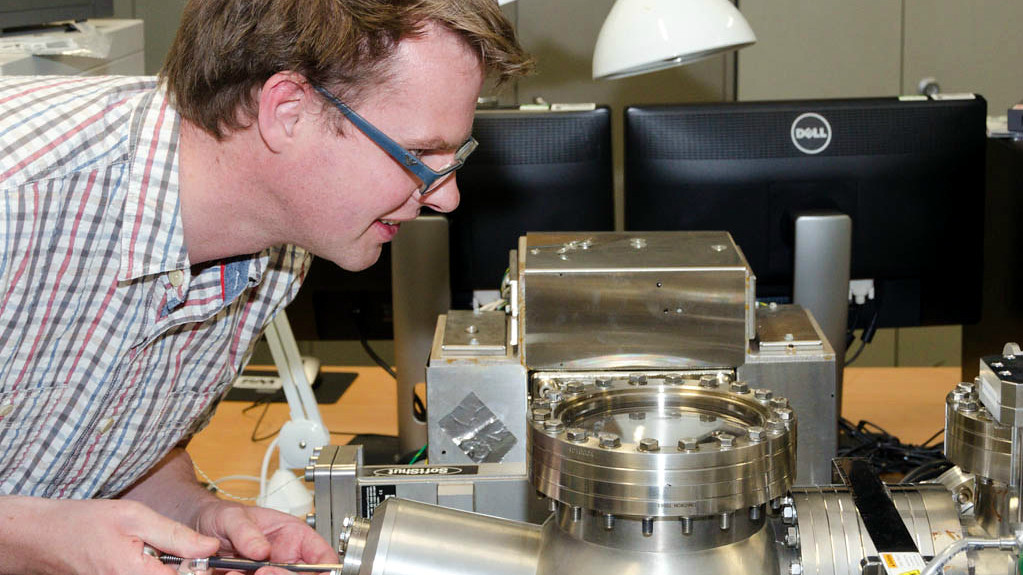Scientists from the Department of Physics have identified a method to visualise, over a millionth of a billionth of a second, the initial quantum behaviour of electrons on a surface.
The findings are a promising step towards being able to manipulate and control the quantum behaviour of high energy, or ‘hot’, electrons – important for future high efficiency solar cells, and atomically engineered systems including proposed quantum computing devices.
The team, working with colleagues at the University of Birmingham, used a Scanning Tunnelling Microscope to inject electrons into a silicon surface, decorated with toluene molecules. As the electrons propagated from the tip position across the surface, they induced the toluene molecules to react and ‘lift off’ from the surface.
By measuring the precise atomic positions from which molecules moved, the team identified that electrons retain their initial trajectories, or quantum state, across the surface for the first seven nanometers of travel, before they are disturbed and undergo random scattering like the ball in a pin-ball machine. In essence is a change from a quantum to a classical system.
Dr Peter Sloan, from the University of Bath, said: “Hot electrons are notoriously difficult to observe due to their short lifespan, about a millionth of a billionth of a second. This visualisation technique gives us a new level of understanding. We were surprised to find that the initial quantum trajectories stay intact for long enough for a single electron to 'spread out' over a disc 15 nanometers in diameter.
“Quantum physics dictates that electrons behave as waves. Just as a pebble dropped into a still pond forms concentric rings that propagate out, so during the initial seven nanometers so does the hot electron. The electron starts off as a tiny object less than a nanometer in diameter just after we inject it into the surface, then it calmly propagates out, getting bigger and bigger, by the time it’s disturbed (losing its pristine quantum nature) it reached the size of a series of rings 15 nm in diameter. That may seem small, but on the scale of atoms and molecules this is really a vast size.”
Professor Richard Palmer, from the University of Birmingham, explained: “These findings are, crucially, undertaken at room temperature. They show that the quantum behaviour of electrons which is easily accessible at close to absolute zero temperature (-273°C) persist under the more balmy conditions of room temperature and over a large 15 nanometre scale. These findings suggest future atomic-scale quantum devices could work without the need for a tank of liquid helium coolant.”
Now that the team have developed the method of visualising quantum transport, the goal is to understand how to control and manipulate the initial quantum state of the electron. As Prof Palmer put it: “The implications of being able to manipulate the behaviour of hot electrons are far-reaching; from improving the efficiency of solar energy, to improving the targeting of radiotherapy for cancer treatment.”
The research is published in Nature Communications.
The theoretical modelling was done in collaboration with Dr Simon Crampin in the Department of Physics at Bath. The experiments were primarily performed by PhD student Kristina Rusimova, with a subset run as a project for undergraduates. Nicola Bannister, who is now starting at physics PhD at University of Bath said: “The MPhys undergraduate project was my first introduction into academic research. It was a fantastic experience and is the reason I chose to continue my academic career by doing a PhD.”

